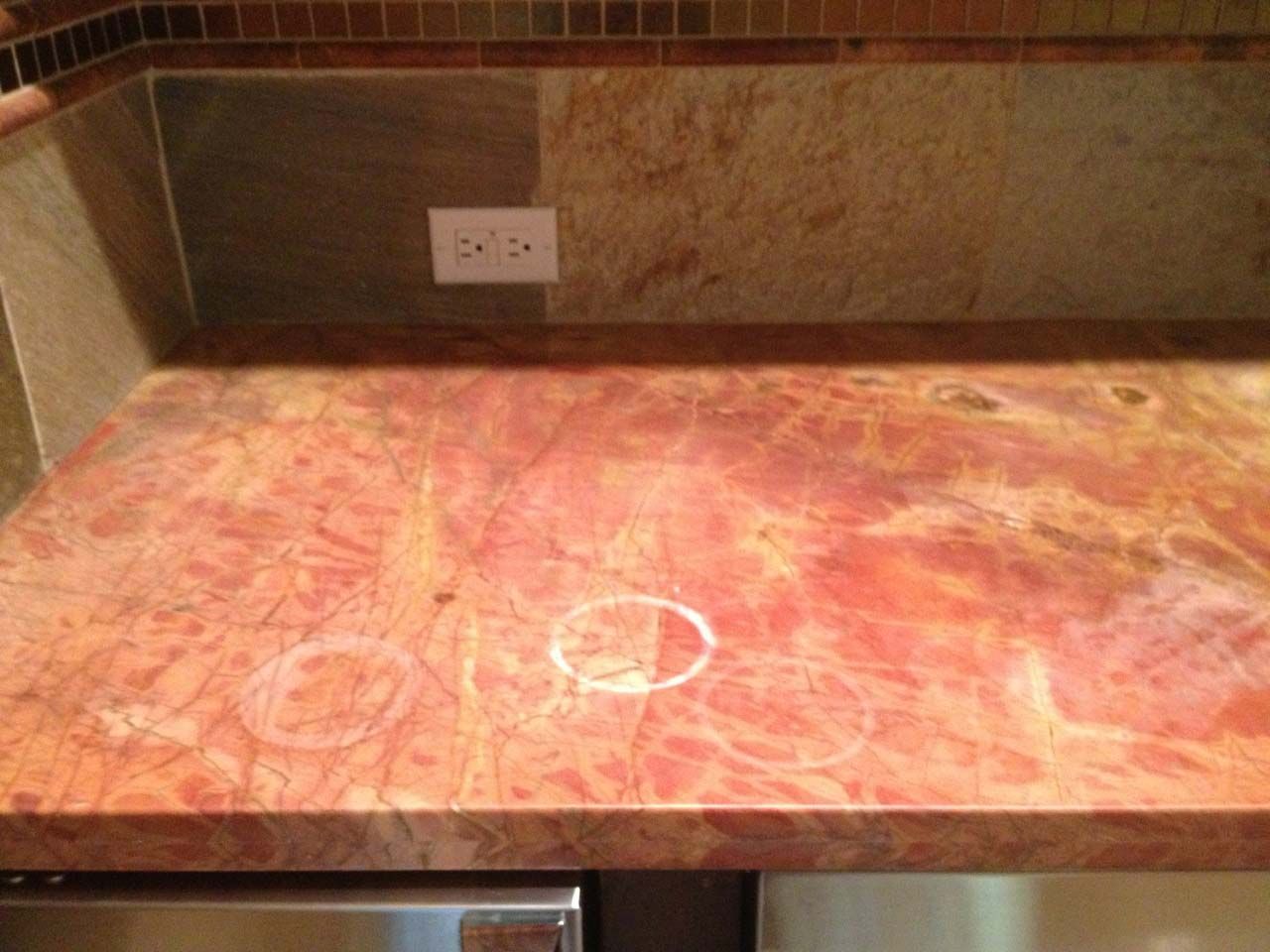Marble Stain Removal: What Works, What Doesn't, and When to Call a Pro
Stains on marble can ruin the look of an otherwise flawless surface. Whether it's from oil, wine, coffee, or something you can't identify, marble stains can be frustrating — especially when typical household methods don't work.
What Causes Stains on Marble?
Marble is a porous natural stone. That means anything with pigment or oil can seep below the surface and leave a stain. Common causes include:
- Oils: Olive oil, lotion, or greasy foods
- Organic matter: Coffee, wine, tea, fruit juice, leaves, mold
- Metal: Rust from cans, tools, or fixtures
- Water: Hard water can cause mineral buildup and dull marks
- Cleaning products: Anything acidic (like vinegar or bleach) can etch or discolor marble
Stain vs. Etch
Know the Difference
People often confuse stains with etch marks, but they’re completely different problems:
- Stains darken the marble and are caused by absorption of a liquid or pigment.
- Etching looks like a dull, light-colored mark or ring. It's a chemical burn on the surface.
- Knowing which one you have is important, because the treatments are not the same.
Can You Remove Marble Stains Yourself?
Sometimes, yes — but only if the stain is shallow and treated early. Most DIY advice involves poultices (a paste that draws out the stain), but even that depends on the type of stain and the finish of your marble.
Common DIY Mistakes:
Using vinegar or lemon juice (etches and damages marble)
Scrubbing with abrasive pads (scratches polished surfaces)
Trying bleach or hydrogen peroxide (can work, but may bleach surrounding stone)
- If the stain has been there more than a few days, or if the surface looks dull around it, a DIY fix may make it worse.
What Do Professionals Do Differently?
Professionals identify the type of stain and use pH-balanced, marble-safe stain removers. The process may include:
- Deep poultice treatment
- Surface cleaning and neutralization
- Blending the area to match the surrounding finish
- Repolishing and sealing (to prevent future staining)
Some stains require multiple steps — especially oil-based or rust stains that have had time to soak in.
Is Your Stone in Need of Professional Care?
Is the stain still visible after cleaning?
If you've tried cleaning and the stain remains, it's a sign that deeper issues may be at play. Don't let it linger—consult a stone care expert.Did it change the texture or shine of the surface?
Changes in texture or shine can indicate damage that requires professional restoration. It's best to address these concerns sooner rather than later.Are there multiple types of marks (stains and etches)?
Different types of damage often require different treatments. If you're seeing a mix of stains and etches, it's time to call in the experts.Are you unsure what caused the discoloration?
Not knowing the cause of discoloration can complicate the restoration process. A professional can help identify the issue and recommend the best solution.
How to Prevent Future Stains
Use Coasters, Cutting Boards, and Trays
Clean Spills Immediately
Avoid Acidic Cleaners
Reseal Your Marble Regularly
Key Takeaways
Understanding marble care is essential for maintaining its beauty and longevity. Here are some crucial points to keep in mind:
Not All Marks Are Stains
Many marks on marble surfaces are actually etch marks, not stains. Recognizing the difference can help you choose the right treatment.
DIY Stain Removal
While DIY methods can be effective, they come with risks. Improper techniques may worsen the damage or lead to further issues.
Treating Stains
Most stains can be effectively treated without the need to replace your marble, saving you time and money.
Prevention is Key
The best long-term solution for marble care is prevention. Regular maintenance can help avoid stains and etch marks.
Why Choose Marbleblu?
With our factory-level restoration methods and over 30 years of specialized experience, we ensure your marble looks its best for years to come.
Get Started Today
Contact us for a customized solution tailored to your marble needs.
Learn More
Discover how we can help restore and protect your marble surfaces with our expert services.
Trusted by 100,000+
Customers
Since 1994
We're here to help!
We have been restoring, repairing, polishing, grouting and protecting tile, marble, stone and grout since 1994.
Hello!
Request a callback
We’ll call you in under 1 hour!
Speak to a real expert.
Contact Us
We will get back to you as soon as possible.
Please try again later.
Do you need stain removed?
A polished finish doesn’t always mean the stone was fully restored.
We use the same detailed approach trusted by stone manufacturers — built for lasting results.
When it’s done right, you see the difference now — and years from now.
Questions?
We're here to help.
We will get back to you as soon as possible.
Please try again later.

Recent news & Stone RestorationTopics
Latest updates from the industry







